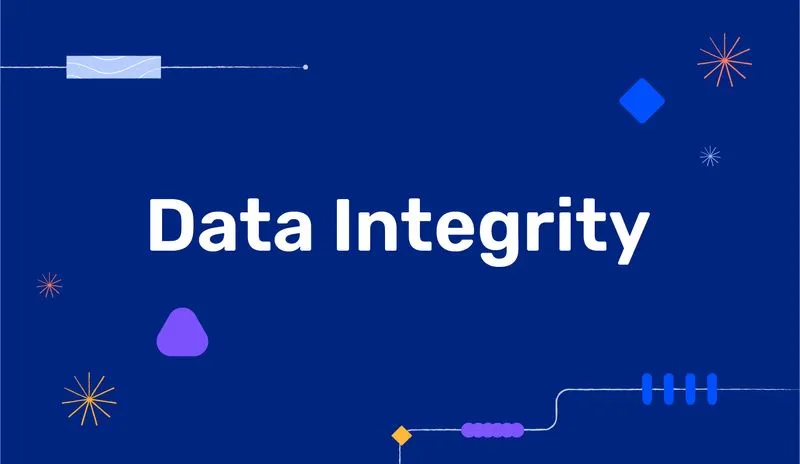Having access to complete and accurate information is essential for healthy business growth, fueling your reporting, compliance, and business intelligence needs. The stakes become even higher in the insurance industry, since companies generate and rely on large amounts of data on an ongoing basis, for a multitude of purposes, including onboarding new customers, policies, personally identifiable information (PII), and more.
Navigating the sheer scale of insurance data is no small challenge - the average insurance organization generates 2.5PB of data per year, and this is growing at a rate of 30% per year. However, data integrity has become crucial at this point. Especially since the stakes are so high, with risks including high customer churn, wasted resources, and needless financial losses.
What is data integrity and why does it matter?
Data integrity is the guarantee that the data you use for your customer processes and services, marketing analytics, regulatory requirements, reporting, decision-making, or any other application is wholly reliable, recorded correctly, and remains that way throughout its lifetime.
Data integrity means that your data is entirely accurate and can be trusted by you, your clients, and your partners. It also facilitates a smoother customer experience, improving customer satisfaction, reducing churn, and ensuring your customers’ personally identifiable information (PII) is correct.
Data integrity can be compromised for many reasons, including human error, formatting inconsistencies, cybersecurity threats, and collection errors. Data collection is especially problematic for insurance companies, where manual collection makes the process lengthy, expensive, and more prone to inconsistencies.
At the end of the day, data-driven decisions are only as good as the data they rely on. Maintaining a high level of data integrity keeps you better informed and ensures your business strategy is based on solid information. Most importantly, it saves you the time, money, and resources that may be lost due to incorrect or incomplete data.
In addition to the direct impact on your business's ability to grow, ensuring data integrity is important for both the privacy and security of your customer, as well as their accurate representation in your reporting.
The consequences of poor data integrity
With demands for large-scale data processing and a need for precision, the costs of poor data integrity are too big to ignore. These costs are so high that creating a reliable reconciliation and validation process to ensure data integrity has become crucial.
One of the biggest and most direct ways it affects your business is through financial loss. IBM reports that the total yearly cost of poor-quality data was $3.1 trillion in 2016 - just in the US alone. Individually, according to Gartner, businesses average around $15 million in losses for the same reason.
[.figure]$3.1 trillion[.figure]
[.emph]total yearly cost of poor-quality data in the U.S.[.emph]
Insurance organizations are adopting ever more to data management tools as they become available; McKinsey says that insurtech investments have more than doubled from 2019 to 2021.
However, the consequences of the traditional manual onboarding and data collection processes are still very real. Without a centralized data intake process, multiple onboarding formats mean that data becomes siloed and inaccessible across the entire organization. Oftentimes, even when available, the data is not necessarily updated in real-time or reliable for key strategy-building. Those inconsistencies result in big losses in time, money, and resources while they remain unresolved.
Besides the toll of misinformed decision-making, insurance companies can also suffer big losses and reputational damage from inconsistent data management. Without a consistent way to measure and manage data accurately, insurers could end up either over or underpaying customers, not to mention failing to provide adequate and efficient financial assistance in general.

Ensuring data integrity
Preserving a high standard of data integrity is an ongoing process that should take place throughout your business’s entire lifetime.
Building the mechanisms for consolidating your data is central to this task. This is especially true for insurance companies that receive mass amounts of data from multiple sources, such as phone calls, PDF forms, and web forms. High data integrity depends on having a unified, clean system for processing and storing information.
Data itself should be clear and concise, and organized into simple, logical directories. Whenever possible, collection should be automated, verified, and validated at the point of entry, ensuring that data integrity starts from the beginning of its lifetime in your systems. This means that your customers’ information should be checked for accuracy in real-time while they’re filling out the form. This can be done automatically using validation rules, integration with internal systems, or using APIs and third-party data sources.
Once collected and verified, accurate customer data can be:
- Automatically routed to the insurance company’s core system or third-party app for processing
- Funneled into additional applications, such as reporting and analytics tools.
A digital data intake journey offers solutions for these common challenges. Multiple data streams can be consolidated automatically into a single repository, allowing you to unite and cross-reference data points. Whenever needed, both agents and customers can update individual information without the inconvenience of completing more forms.
Tips for maintaining data integrity
While there will be some percentage of data inconsistencies that may remain out of your control, there are also steps you can take to reduce this on a day-to-day basis.
Data integrity starts at the data collection design phase. Consider not only your general data needs, but also how your chosen method may affect the accuracy, completeness, and quality of the data you acquire. After testing, it’s worth taking time to assess whether the collection method worked as intended and what you may need to do to improve it.
If you choose not to go the automation route, it’s possible to reduce human error, which is one of the biggest reasons for poor data integrity. However, this is time-consuming and costly, requiring additional human resources to check and review all data.
Threats to data integrity are as much external as they are internal, so it’s important to stay aware of and have protocols for cybersecurity risks. Through malware and other means, hackers may intend to steal or damage your data. Educating yourself and your team about the risks will minimize the possibility of your data’s integrity being harmed in this way.
If there are multiple team members handling your data, it is important to communicate consistently and often about the importance of ensuring your data is accurate, complete, and quality, as well as protecting it from threats. As you build awareness, you will be able to work together more effectively to support this vital aspect of your business.
Finally, investing in a digital data intake software can give you the peace of mind of knowing exactly where your data is going and how. Digital data journeys address all of the pain points of insurance data collection as described above and minimize the threat of poor data integrity from one centralized platform.
Summary
At the end of the day, businesses, partners, investors, and customers alike should be able to have faith and take pride in the services they provide and receive. No business, especially increasingly large-scale insurance companies, will be able to meet the demands of customer expectations, fulfill data compliance requirements, and withstand the social and financial losses without accessible, reliable data.
Using digital data intake journeys to consolidate and automate the collection process, companies can ensure that their data is cleaner and more accurate. As more companies get on board, we are likely to see customer experience, efficiency, and profits rise, and the future looking a lot brighter.





